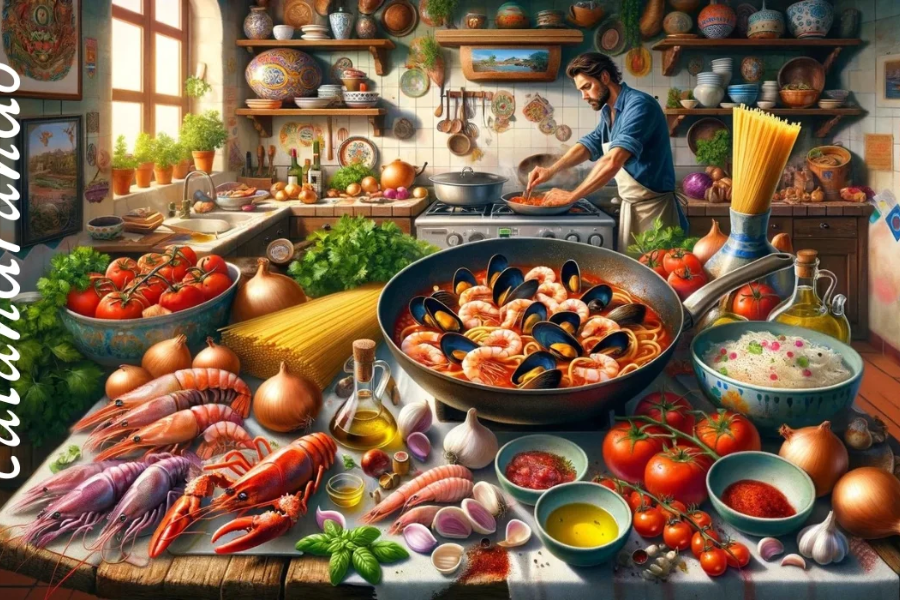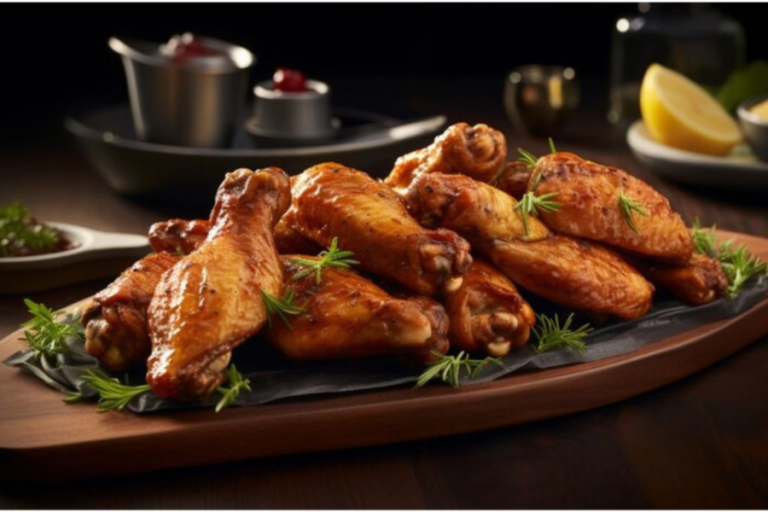Sicilian Calandrando: Chef Secrets for a Flavorful Seafood Stew
Introduction
Have you ever stumbled upon Sicilian Calandrando? This dish is a hidden gem in Sicilian cuisine, celebrated for its bold flavors and hearty ingredients. Calandrando is a traditional seafood stew that combines the freshest catch with aromatic herbs, tomatoes, and a blend of flavors that capture the true essence of Sicily. Whether you’re a professional chef or an enthusiastic home cook, learning the techniques behind this dish will elevate your culinary skills to the next level.
Unveiling Chef Techniques
Mastering culinary techniques is a journey that requires practice, precision, and a deep appreciation of both the ingredients and the process. In this guide, we’ll unlock some essential chef secrets that will help you transform ordinary dishes into extraordinary culinary creations.
The Foundation: Mastering Knife Skills
Knife skills are the foundation of any great kitchen. They not only ensure safe and efficient preparation but also enhance the presentation of your dish. Here’s what you need to know:
The Proper Grip
Your knife should feel like an extension of your hand. Hold the handle with three fingers, while your thumb and forefinger grasp the blade. This provides control and stability, allowing for precise cuts.
Key Cutting Techniques
Chopping: Quick, powerful cuts for vegetables and herbs.
Dicing: Creating uniform cubes for consistent cooking.
Julienne: Thin, matchstick-like slices, perfect for garnishes.
Brunoise: A fine dice, often used for soups or sauces.
Knife Care
A sharp knife is safer and more effective. Regularly honing and sharpening your blade ensures clean cuts and reduces the risk of accidents.
Sautéing: Creating Depth of Flavor
Sautéing uses high heat and a small amount of fat to cook ingredients quickly, creating layers of flavor and texture.
Choosing the Right Pan
A heavy-bottomed skillet or sauté pan is essential for even heat distribution, preventing hot spots and ensuring your food cooks evenly.
Controlling Heat
Preheat your pan before adding ingredients to ensure a good sear. This locks in the juices and intensifies flavors, especially when sautéing seafood for Calandrando.
Perfecting the Process
Fat Selection: Use fats with a high smoke point, like clarified butter or vegetable oil.
Timing: Add ingredients based on their cooking times. Start with aromatics like onions and garlic, then add proteins and finish with vegetables.
The Maillard Reaction: Unlocking Rich Flavors
The Maillard reaction, or the browning process, occurs when proteins and sugars are exposed to heat, creating complex flavors.
Conditions for Optimal Browning
Dry Surface: Pat ingredients dry before cooking to enhance browning.
High Heat: Use high temperatures to trigger the reaction.
Avoid Overcrowding: Too much food in the pan can lower the temperature and prevent browning.
Applications in Cooking
Searing Meat: Creates a flavorful crust while keeping the interior tender.
Roasting Vegetables: Intensifies sweetness and adds complexity to the dish.
Sous Vide: Precision Cooking for Perfection
Sous vide is a technique that involves cooking food in a vacuum-sealed bag at a precise, low temperature in a water bath. It ensures perfect doneness and enhances the natural flavors of the ingredients.
Essential Equipment
Immersion Circulator: Controls the water temperature with precision.
Vacuum Sealer: A vacuum sealer eliminates air from the bag, guaranteeing consistent cooking throughout.
Water Bath: Holds the water and maintains a steady temperature.
How It Works
Seasoning: Season the food before sealing to infuse flavors.
Cooking Time and Temperature: For a medium-rare steak, set the temperature to 130°F (54°C) and cook for 1–2 hours.
Final Touches
After sous vide cooking, briefly sear the food to add a flavorful crust without overcooking the inside.
Emulsification: Creating Smooth Sauces
Emulsification is the process of blending two immiscible liquids, such as oil and water, into a smooth mixture, crucial for sauces and dressings.
Emulsion Types
Temporary: Like vinaigrettes, which require mixing before use.
Permanent: Like mayonnaise, which stays stable.
Key to Success
Emulsifiers: Use ingredients like egg yolks or mustard to stabilize the mixture.
Slow Mixing: Gradually add oil while whisking vigorously for a smooth emulsion.
Baking: The Science of Perfect Results
Baking requires precise measurements and controlled conditions to achieve the ideal texture and flavor.
Understanding Ingredients
Flour: Provides structure through gluten development.
Leavening Agents: Like yeast or baking powder, they help the dough rise.
Fats: Add richness and tenderness.
Sugar: Sugar not only adds sweetness but also helps with browning during the cooking process.
Methods of Mixing
Creaming: Beating butter and sugar to incorporate air for a lighter texture.
Folding: Gently combining ingredients to retain air, essential for delicate baked goods.
Control of Temperature
Preheat your oven to ensure even baking, and always check doneness with a toothpick or cake tester.
Fermentation: Developing Flavor Naturally
Fermentation is a process that uses microorganisms to enhance flavors and add nutritional value.
Fermenting Bread
Yeast and Starters: Yeast ferments sugars, releasing gases that cause the dough to rise.
Proofing: Allow the dough to rise, developing texture and flavor.
Foods that are Fermented
Yogurt: Fermented with bacteria for a tangy flavor.
Kimchi and Sauerkraut: Lactic acid fermentation preserves vegetables and enhances their taste.
Additional Chef Tips for Calandrando
Fresh, Seasonal Seafood: The quality of your seafood will make or break the dish. Opt for fresh, seasonal catches for the best flavor.
High-Quality Olive Oil: A rich, flavorful olive oil adds depth to your stew, enhancing its authenticity.
Broth vs. Water: If you need to add liquid to your stew, use seafood broth for a richer flavor, but be careful not to thin it too much.
Experiment with Wine: Adding white wine can introduce new dimensions to the dish.
Conclusion:
Mastering the technique for making Sicilian Calandrando is like discovering a hidden culinary treasure. Every step, from preparing the seafood to perfecting the base, contributes to the dish’s authenticity and flavor. With these tips, you can bring the vibrant taste of Sicily into your kitchen and impress your guests with this delicious seafood stew.
FAQs:
Where did Calandrando come from?
Calandrando is a traditional Sicilian seafood stew known for its rich flavors and use of fresh, local ingredients.
Can I make Calandrando with frozen seafood?
Fresh seafood is recommended, but if you must use frozen, make sure it’s thoroughly thawed and drained before cooking.
How long does it take to prepare Calandrando?
From prep to serving, the process usually takes about 1 to 1.5 hours.
What pairs well with Calandrando?
Calandrando is great with crusty bread, fresh salad, or even served over pasta for a hearty meal.
Keep an eye for more news & updates on Inspire Breaking!


